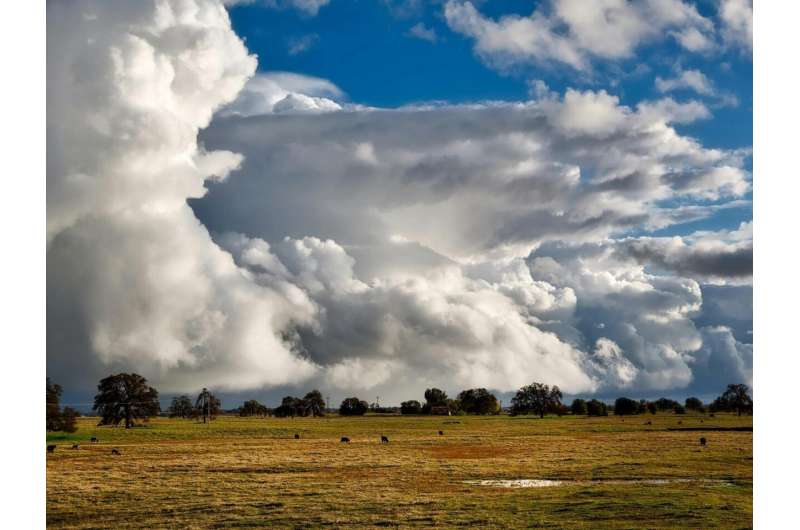Horizontal resolution affects model aerosol properties, finds Earth system model research

Earth system models are running at higher resolutions. Yet parameterizations designed to represent aerosol lifecycles and their interactions with clouds and radiation in the Energy Exascale Earth System Model (E3SM) are developed and evaluated at Earth system model scales, and their performance at higher resolution is unclear.
Researchers have now evaluated the sensitivity of aerosol properties to horizontal grid spacing in E3SM version 1 by comparing simulation results from the low-resolution (~100 km) model and the regional refinement model (RRM) with high-resolution (~25 km) meshes over the United States.
This is the first study to comprehensively evaluate the impacts of horizontal grid spacing on aerosol mass budget and aerosol-cloud-radiation interactions in E3SM. The , published in Geoscientific Model Development, provide insights into aerosol parameterization development and their dependence on model horizontal resolution.
The methodology may help future studies explore the potential impacts of model resolutions on simulation results.
Results show that increasing resolution over the contiguous United States produces more natural dust, sea salt, and marine organic matter. The high-resolution model simulates stronger aqueous-phase production of sulfate due to increased cloud liquid water content while slightly less gas-phase chemical production of sulfate.
In addition, the high-resolution model resolves more large-scale precipitation and produces less convective precipitation, leading to increased (or decreased) aerosol wet scavenging by large-scale (convective) precipitation.
The high-resolution model also promotes aerosol activation and water vapor condensation, which produces more cloud droplets, a larger cloud droplet radius, and a larger cloud optical depth. Therefore, the aerosol indirect effect is stronger in the high-resolution model, leading to an increase in the effective radiative forcing of anthropogenic aerosols by about 12%.
More information: Jianfeng Li et al, Assessing the sensitivity of aerosol mass budget and effective radiative forcing to horizontal grid spacing in E3SMv1 using a regional refinement approach, Geoscientific Model Development (2024).
Provided by Pacific Northwest National Laboratory



















